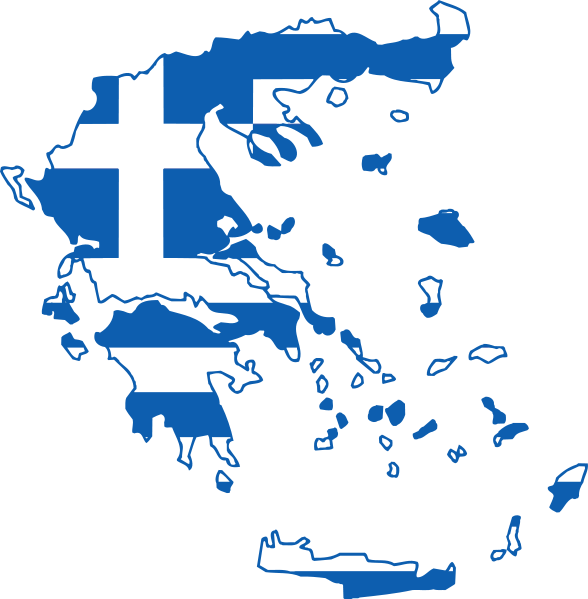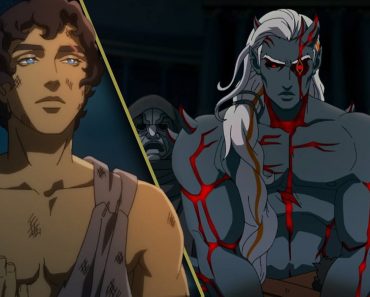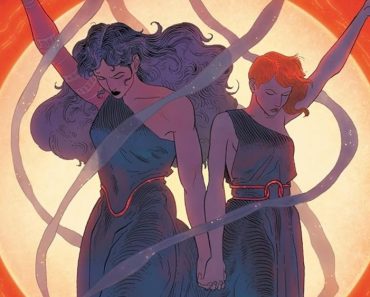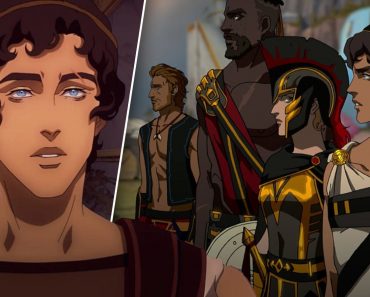The pantheon has spoken, and the final battle has been fought. The acclaimed Netflix animated series, Blood of Zeus, which first burst onto screens in 2020, reached its epic conclusion with its third and final eight-episode season. This season plunges us into mythology at its most extreme: the prophesied return of the Titans, led by the formidable Cronus and the monstrous Typhon, threatening to shatter Olympus and reshape the cosmos. At the heart of this maelstrom stood Heron and Seraphim, Zeus’s demigod sons, whose intertwined destinies and evolving brotherhood were fated to determine the world’s salvation or ruin. The very fact that this was the final chapter imbued every prophecy, every confrontation, and every sacrifice with irrevocable weight, demanding a resolution worthy of the gods themselves.
The Plot
The third season of Blood of Zeus dropped viewers directly into the aftermath of the seismic second-season cliffhanger. The demigod hero Heron lay seemingly dead, betrayed and struck down by Hades, who, in his desperate desire for a better existence for Persephone and their children, seized the power of the Eleusinian Stone for himself. This act of betrayal proved to be the ultimate affront to Gaea, the primordial goddess of the Earth. Outraged by the gods’ incessant corruption and infighting, she unleashed the long-imprisoned Titans, with the monstrous Typhon at the forefront, to execute judgment upon Olympus. This set the stage for a desperate, world-altering conflict. The Olympians, already fractured and with their king, Zeus, also initially trapped in the Underworld alongside his son, found themselves facing an existential threat. The unleashed Titans, led by Zeus’s own father, Cronus, and the near-unstoppable Typhon, heralded an era of “chaos… devastation, loss, and carnage on a massive scale,” as described by series co-creator Charley Parlapanides. The gravity of this new war was immediately underscored by the early and permanent deaths of Ares, the god of war, and Hephaestus, the divine smith, their souls horrifyingly erased from existence in the Underworld’s Abyss by Cronus. Persephone, Queen of the Underworld, also met a tragic end, sacrificing herself to allow Hades and their children to escape Typhon’s assault. The final eight episodes immerse us in various plot threads. Heron’s journey was paramount: his resurgence from the Underworld, a feat in itself, saw him grappling with his destiny and ultimately embracing his immense power. His path was inextricably linked to that of his half-brother, Seraphim. Formerly bitter antagonists, the prophecy of their shared role as saviors compelled them into an uneasy alliance, their bond deepening through shared trials, including a significant subplot involving their efforts to secure passage for Seraphim’s deceased lover, the priestess Gorgo, to the Elysian Fields. The surviving gods, stripped of some of their power and facing annihilation, were forced to confront their own failures and the necessity of unity against a common, overwhelming enemy. Their fight for survival was marked by quests for powerful artifacts, such as the Torch of Hecate and the Necklace of Harmonia, items that served as narrative catalysts propelling the characters toward their final confrontations. This desperate state of affairs, beginning with the heroes at their absolute nadir, created a powerful dramatic engine, forcing growth, unlikely alliances, and a deep exploration of redemption against seemingly insurmountable odds. The decision to conclude the series in three seasons, rather than the initially planned five, inevitably shaped the pacing of these final events, potentially leading to the accelerated resolution of certain storylines to ensure the central narrative reached its intended conclusion.
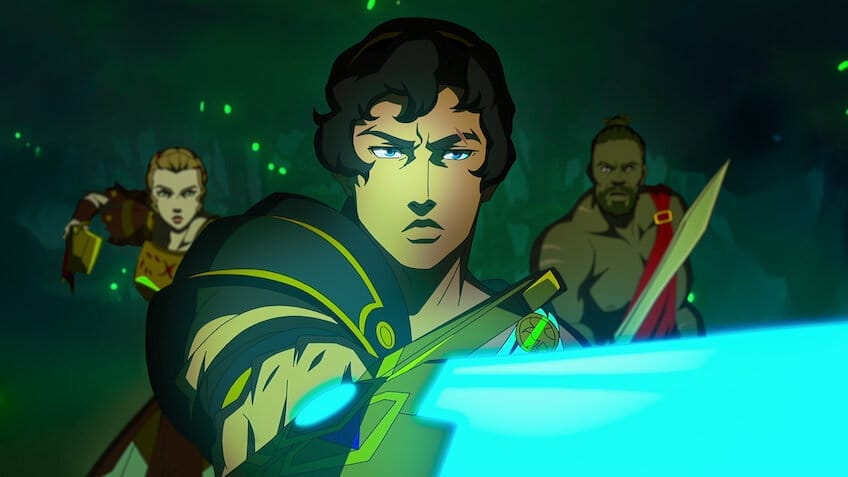
The Pantheon’s Fury: New and Returning Titans and Gods
The final season unleashed the most feared figures from the deepest recesses of Greek mythology, chief among them Cronus, the deposed King of the Titans. With the imposing gravitas of acclaimed Alfred Molina’s voice, Cronus emerged not merely as a villain but as a figure of “immense power and depth,” according to the Parlapanides brothers. As the father whom Zeus and his siblings overthrew to establish their Olympian reign, Cronus’s return was a direct confrontation, embodying a generational conflict and the cyclical nature of power. His presence amplified the theme of “the sins of the father” that resonated throughout the series, forcing the Olympians to confront the violent origins of their own dominion. Alongside him rose Typhon, the monstrous entity Gaea unleashed in her fury. Described in the series’ lore as one of the greatest challenges the united Pantheon had ever faced—a beast whose power was so immense it was sealed within the Eleusinian Stone—Typhon represented a more primal, cataclysmic threat than the calculating Cronus. This distinction allowed for varied forms of conflict: strategic clashes against the Titan forces and visceral battles for survival against Typhon’s pure destructive power. While Cronus was considered a well-realized villain by critics, some found the wider roster of Titans, hinted to include figures like Hyperion and Iapetus in promotional material, to be “grossly underutilized” beyond Typhon, perhaps a casualty of the season’s condensed timeframe. Gaea, the primordial goddess of the Earth, served as the catalyst for this final war, her actions born from disgust with the Olympians’ endless corruption and infighting. Her role positioned her as a moral arbiter, questioning the gods’ fitness to rule. However, her storyline took a curious turn, with reports indicating she largely disappeared from the narrative in later episodes without facing clear repercussions for unleashing such devastation. This unresolved arc left her final judgment on the gods somewhat ambiguous, a narrative thread that could have seen more thorough exploration in a longer series. The returning Olympian gods were forced into desperate measures. Zeus, Hera, Hades, Poseidon, and Demeter, among others, played crucial roles. Notably, characters like Hera and Hades, previously antagonists or morally gray figures, underwent significant redemption arcs, compelled by the extreme circumstances to find common cause and seek atonement for past wrongs. Hades, whose betrayal ignited Gaea’s wrath, faced the direct consequences of his actions. Captured by Cronus, he endured immense suffering, including witnessing the permanent obliteration of Ares and Hephaestus’s souls. His eventual freedom and participation in the final battle also steered him toward a redemptive path. His queen, Persephone, made the ultimate sacrifice, dying to protect Hades and their children from Typhon, her soul subsequently residing in the Underworld. The fates of other significant characters, however, felt less resolved. Alexia, Heron’s steadfast ally and love interest, was noted by some sources as having an underdeveloped or unaddressed final state. One article even hinted at an “Alexia-sized problem” with her portrayal. While Heron envisioned a future with her, her narrative closure seemed to be a casualty of the season’s pacing. Similarly, the primordial goddess Gaea, after unleashing the Titans, largely vanished from the latter part of the season, leaving her motivations and ultimate fate ambiguous. These loose ends for secondary but important figures highlight the challenges of concluding an expansive narrative within a reduced timeframe. The high stakes of the Titanomachy were brutally established with the early and permanent deaths of Ares and Hephaestus, underscoring the overwhelming power of the Titans and differentiating their demise from the more temporary “deaths” of central figures who could traverse the Underworld.
Animation and Style
The visual tapestry of Blood of Zeus has consistently been one of its most praised aspects, and the third season continued this tradition, benefiting from the acclaimed work of Powerhouse Animation Studios, alongside South Korean studios Mua Film and Hanho Heung-Up. Critics and creators alike noted that the animation quality remained high, with some suggesting improvements in Season 3 due to production changes made during the challenging second season. The result was a visually rich experience, featuring well-rendered Greek backgrounds, detailed character designs for both the Olympians and the newly prominent Titans like Cronus and Typhon, and action sequences praised for their epic scale and clarity. The series employed a 2D animation style that aimed to convey deep emotional truth, a goal particularly evident in the characters’ expressive eyes. Charley Parlapanides revealed that Powerhouse Animation specifically manipulated eye lighting and color to enhance emotional expression, a subtle but effective technique. This focus on visual storytelling extended to the show’s environments, with painted landscapes by background designer Ryan Brothers helping to establish the distinct atmosphere of each new location. Furthermore, director Shaunt Nigoghossian emphasized unique death sequences in the fight choreography, ensuring each fatal blow felt distinct and meaningful, a hallmark carried over from the first season. The series’ approach to Greek mythology was explicitly one of reinterpretation rather than faithful adaptation. It was presented as a story “lost to history,” granting the creators significant freedom to “remix” established lore. Gaea’s role as a vengeful force against divine corruption, and the portrayal of Cronus and Typhon as apocalyptic threats, are examples of this creative license. Typhon’s power, for instance, was uniquely tied to the Eleusinian Stone, an artifact central to the Season 2 conflict. Season 3 also incorporated mythological artifacts as plot MacGuffins. The Torch of Hecate was one such item. In classical mythology, Hecate, the goddess of magic, witchcraft, and crossroads, frequently carries torches symbolizing illumination, guidance (particularly through the night or the Underworld), and her connection to the mystical. It is likely the series utilized the torch in a quest related to these themes, perhaps involving a journey into darkness or a search for hidden knowledge. Another key artifact was the Necklace of Harmonia, which critics noted effectively tied into Seraphim’s story. Mythologically, this necklace is a cursed object, crafted by Hephaestus as revenge for Aphrodite’s affair with Ares (Harmonia’s parents). It brought misfortune upon its wearers, despite often granting eternal youth or beauty. Its connection to Seraphim in the series could have explored themes related to his demonic heritage, a cursed past, or his arduous path to redemption, adapting its mythological weight to his specific character arc.
And the Time Came to Bid Farewell to the Gods
As the dust settles on the final battlefields of Blood of Zeus, the series leaves a notable mark on the adult animation landscape. The creators, Charley and Vlas Parlapanides, aimed to provide a resonant conclusion, particularly for the intertwined fates of Heron and Seraphim, and on this front, the ending largely succeeded in delivering “hope” and “redemption.” Their journey from bitter adversaries to brothers finding peace together in the Elysian Fields formed the emotional anchor of the season, a testament to the creators’ focus on this central relationship. Blood of Zeus distinguished itself with its mature handling of Greek mythological themes, infusing them with visceral action, complex character drama, and a willingness to explore the flawed, often brutal, nature of its divine and mortal cast.
Where to Watch “Blood of Zeus”
